Invoking the Candelabra
The underlying legacy of the quintessential symbol of Liberace
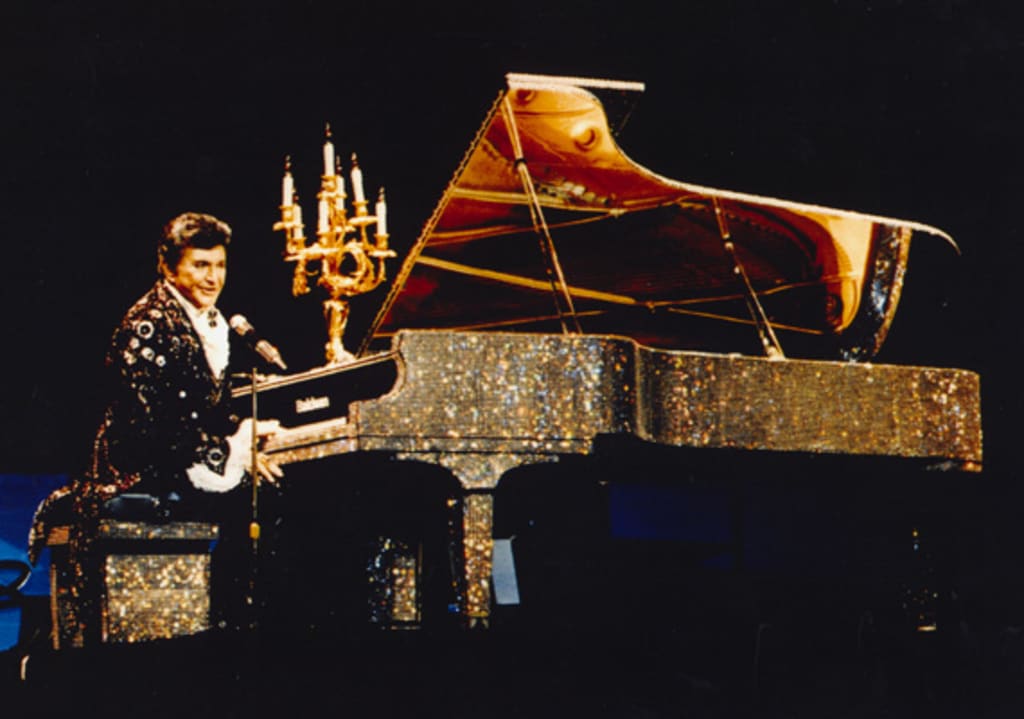
Among the artifacts of the Liberace Museum Collection is a magnificent grand piano which dates from 1830, known as the Royal Bosendorfer. One of the finest pianos of the romance era, it was famously played by composers Robert Schumann, Johannes Brahams, and Franz Liszt - a favorite of Liberace.
With such a tremendous provenance, the piano was acquired by Michael III, Prince Obrenovic of Serbia, in 1860. It left the palace with his fiancé upon his assassination in 1868, and eventually came to rest in the Liberace Museum Collection, where it continues to charm viewers to this day.
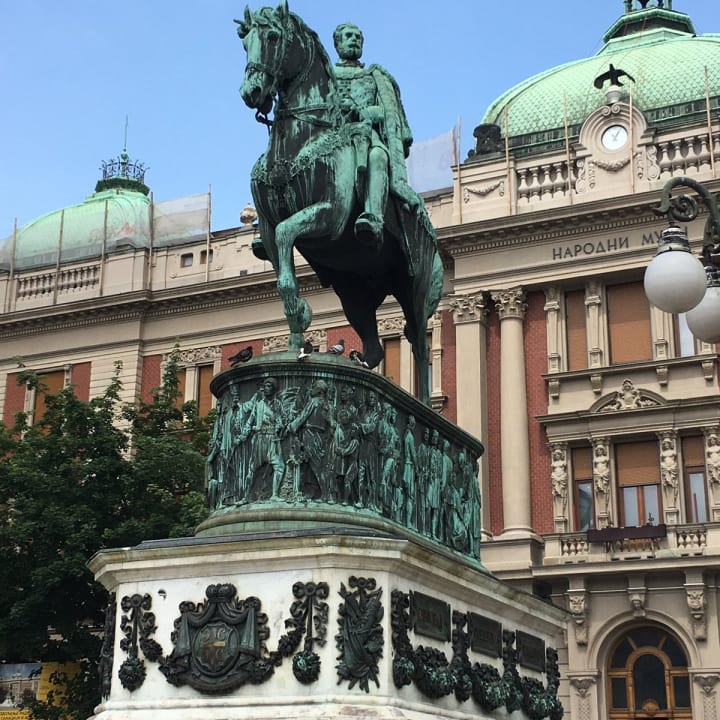
Franz Liszt is widely acclaimed as the first rock star, long before rock music. It was Liszt who first drew crowds to piano solo performances. He changed the typical placement of the piano on stage, and normalized opening the lid toward the audience. He was fast and lightening and pushed the boundaries of the then rapidly evolving piano, writing his own music to find its limits. It's no wonder Liberace collected many artifacts connected to Franz Liszt.
Enter the candelabra
The candelabra was essentially a 19th century mansion flashlight, which after the advent of electric light became a classic dining table accoutrement, and by the end of World War II was little more than a symbol of opulence of a bygone era. The baby boom had begun. Suburbia was soon to explode along with the size of the American middle class - a car in every driveway and 2.5 kids for everyone. Television and new technologies of convenience in the atomic age, were all the rage.
Baby boomers saw the decline of the separation of traditional classes in the US. Along with that came the slow disappearance of the remnants of the tycoon and robber baron era. The associated symbols, including candelabras, soon crowded antique and second hand stores.
One day in 1944, a twenty-five your old pianist from Milwaukee sought out and bought just such a piece, for a few bucks. That's when a Manhattan second hand store saw Władziu Valentino Liberace obtain his first candelabra, a simple, yet elegant relic from generation earlier. The buyer fully intended to utilize it to create his brand. He couldn't yet know it would be the launch of a symbol with a trajectory overarching all of show business, for generations to come.
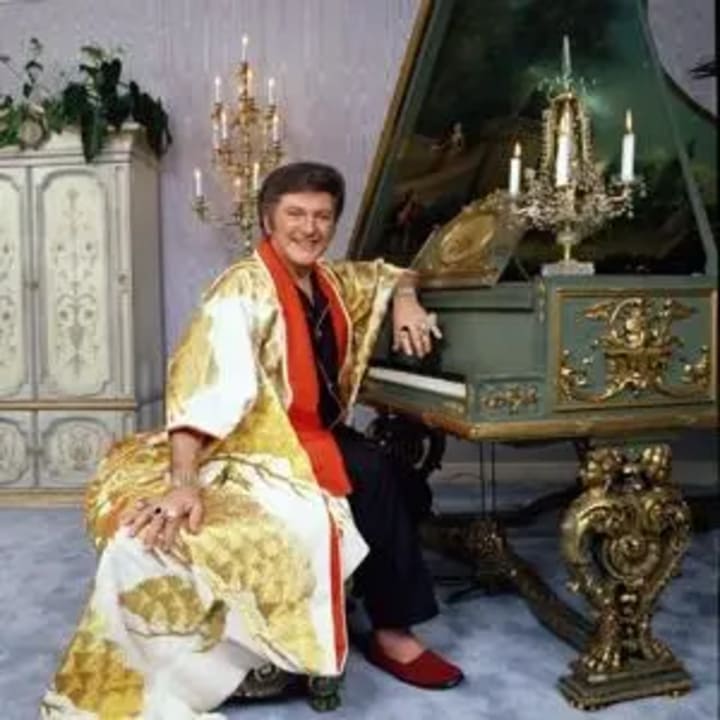
But what made young Liberace go hunting for just such a piece in the first place? Years later, when the candelabra on his piano had been seen by millions of people, its very silhouette having by then become unmistakably Liberace, the showman would tell the story.
A Song to Remember
In a crucial scene in a popular 1945 film, the screen fades from black to a dark hall, and we follow a beautifully dressed young woman carrying a candelabra. She traverses an ornate door to a likewise dark room, with more elegantly dressed guests of the 19th century, mostly seated in a familiar salon setting, coming into view with her light. The room is filled with music, which we understand at this point in the film to be played by Franz Liszt, whom the audience in the dark has come to see. The light from the candles illuminates the elegant costumes of the audience on both sides of the woman's path, as she advances. An amazing, golden baroque piano comes into view, a shadowy pianist at the keys. The woman places the candelabra on the stunning instrument, shedding light on the identity of its incredible player. It is not Franz Liszt. His audience gasps.
The woman leaves the candelabra and walks to the side of the room, and as she takes her seat, she smiles at a character standing next to her, whom we know to be Franz Liszt. The pianist finishes the number with a flourish, and the Franz Liszt character walks to his side to introduce the unknown surprise musician: Frederic Chopin. Applause.
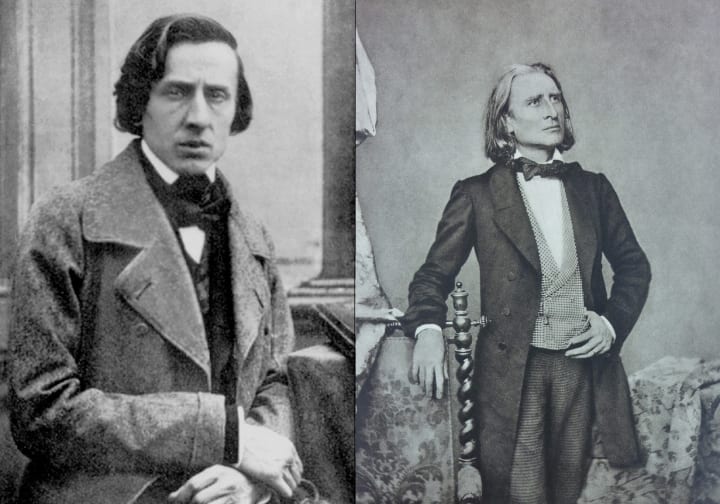
The film is A Song To Remember. It was a very popular story of Chopin.
Having seen the film and obtained the candelabra in 1945, Liberace returned to his nightly performance at the Persian Room in the Plaza Hotel in Manhattan. But this time, he darkened the lights. An assistant preceded him, carrying the candelabra into the room, and placing it on the piano. The audience hushed. Liberace followed and took to the keys. A new tradition was born.
Many years later, Liberace would come across the very piano played by Cornell Wilde as Chopin, from that important scene in A Song To Remember. Owned by a private museum, it was not for sale. So Liberace bought the whole museum, to get it. Becoming the highest paid entertainer in the world had its privileges.
From the old masters to Liberace, the history is in tact. The piano from the film about Chopin remains a key exhibit in the Liberace Museum Collection, along side the Royal Bosendorfer played by Liszt, and the Liberace collection of dozens of candelabras.
About the Creator
Jonathan Warren
Honorary Consul of Monaco, Chairman of the Liberace Foundation for the Performing and Creative Arts, 50 years in Vegas, Citizen of the world.
www.jonathanwarren.me

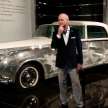



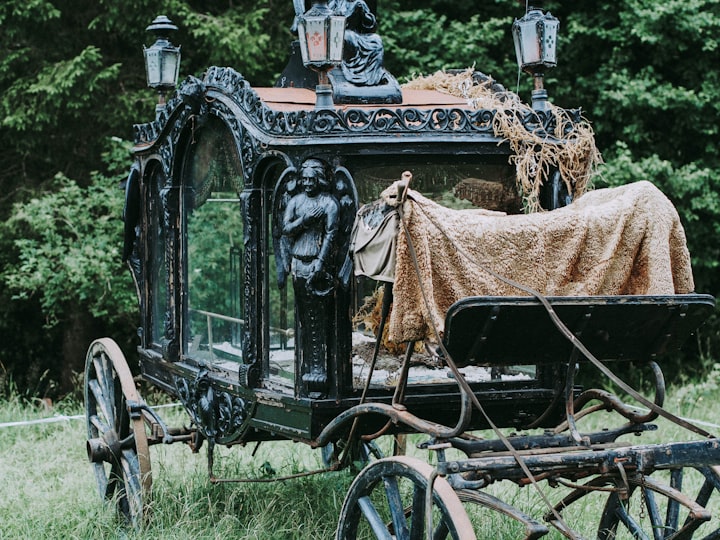
Comments
There are no comments for this story
Be the first to respond and start the conversation.